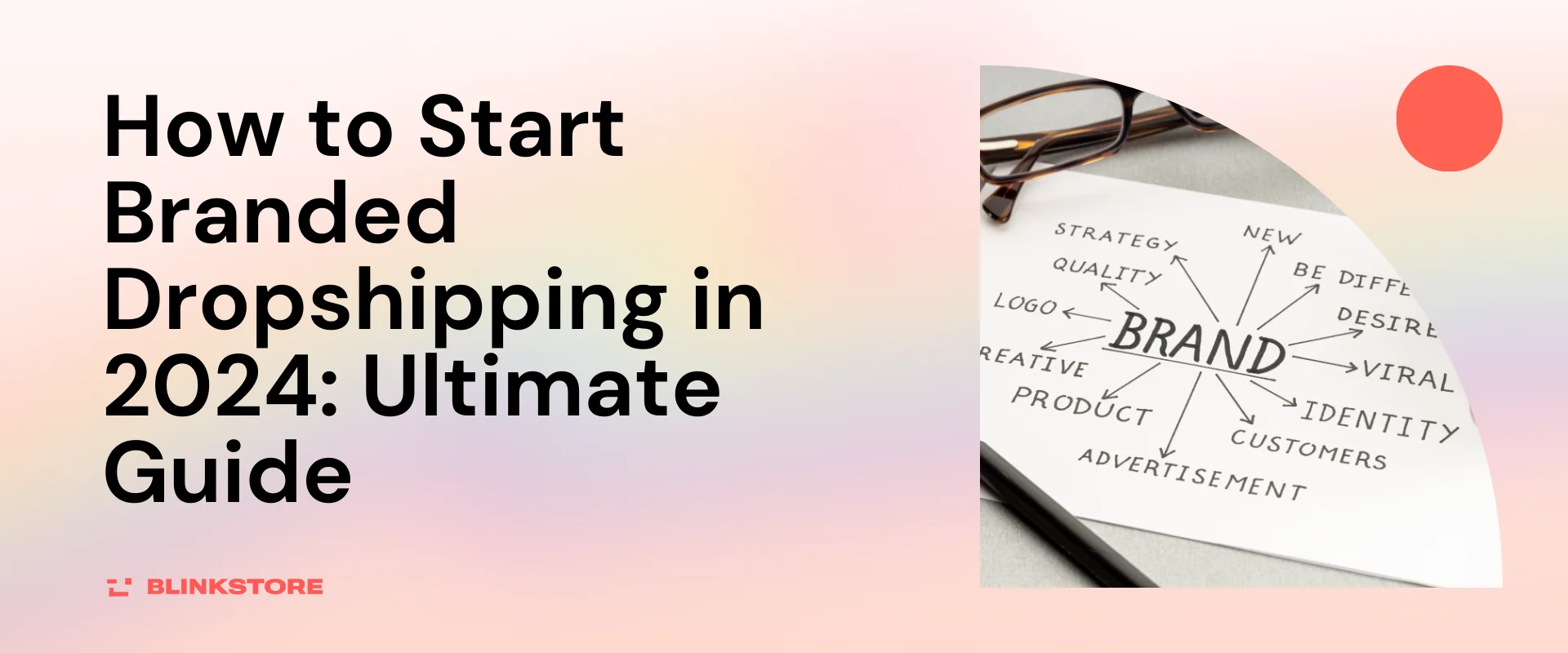Ever wondered if your online store could stand out in the competitive e-commerce domain? Yes, now you can with Branded Dropshipping! This isn’t just about selling; it’s about crafting an unforgettable brand experience. With branded dropshipping it’s your store, your brand, your success story. Here’s a sneak peek of what’s in store:
Table of Contents
According to statistics, the global dropshipping market is expected to grow a lot, reaching a massive $476.1 billion by 2026. On average, it’s predicted to grow around 23.4% every year from 2023 to 2028. So, now is the best time to begin your dropshipping journey. This guide will help you get to your destination.
Case in point: Blinkstore, is your go-to for customizable and free-of-charge dropshipping brilliance.
What is Branded Dropshipping?
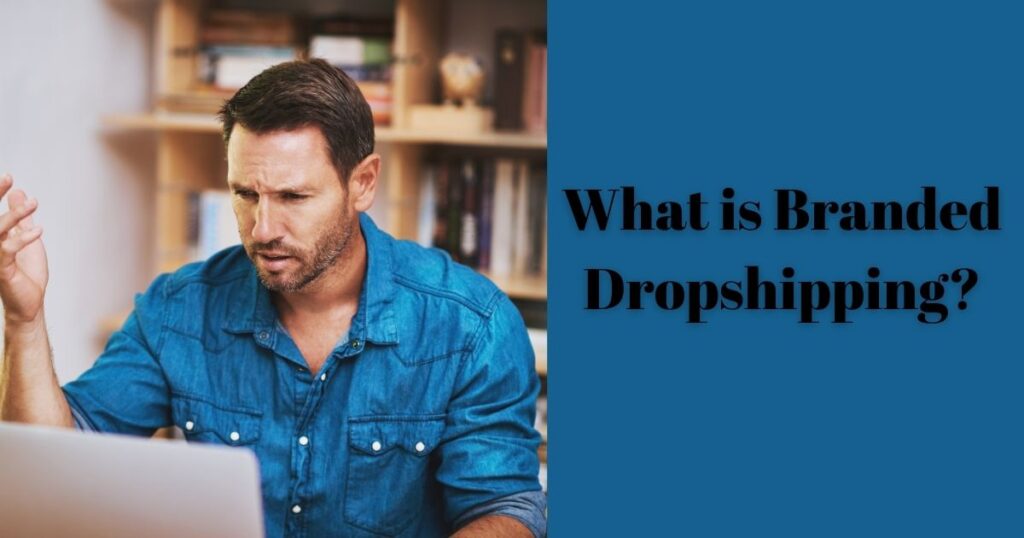
Branded dropshipping means creating your own brand and selling products without inventory, partnering with suppliers for storage, packaging, and shipping. The emphasis is on building a unique brand identity while using the convenience of dropshipping.
In a nutshell, Branded Dropshipping isn’t merely a business model; it’s a strategic move to carve your unique space in the digital marketplace. It goes beyond selling products – it’s about crafting an identity, a story that customers connect with.
Also Read: How to Start Dropshipping for Free in 2024 – Complete Guide
Pros and Cons of Branded Dropshipping
If you are into branded dropshipping consider these pros and cons to improve and understand the dropshipping business.
Pros of Branded Dropshipping:
1. Brand Control: You have control over your brand identity, allowing for a unique and recognizable market presence.
2. Low Startup Costs: Minimal upfront investment as you don’t need to purchase and store inventory.
3. Flexibility: Easily adapt your product offerings and branding to meet changing market trends and customer preferences.
4. Scalability: Scale your business efficiently without the constraints of managing physical inventory or logistics.
5. Focus on Marketing: Devote more time and resources to marketing and building your brand instead of managing inventory.
6. Risk Mitigation: Reduced financial risk as you only purchase products after they are sold, minimizing unsold inventory concerns.
Cons of Branded Dropshipping:
1. Supplier Dependence: Your brand’s reputation is linked to your suppliers’ performance, and issues like stockouts or quality problems can impact your business.
2. Lower Profit Margins: As you pay suppliers for individual orders, profit margins can be lower compared to traditional retail models.
3. Limited Quality Control: You may have limited control over product quality and shipping times, which can affect customer satisfaction.
4. Intense Competition: The ease of entry into dropshipping can result in saturated markets and increased competition.
5. Logistical Challenges: Coordinating with multiple suppliers and managing diverse product lines can pose logistical challenges.
6. Brand Recognition Time: Building a strong brand identity takes time, and initial recognition might be slower compared to established brands.
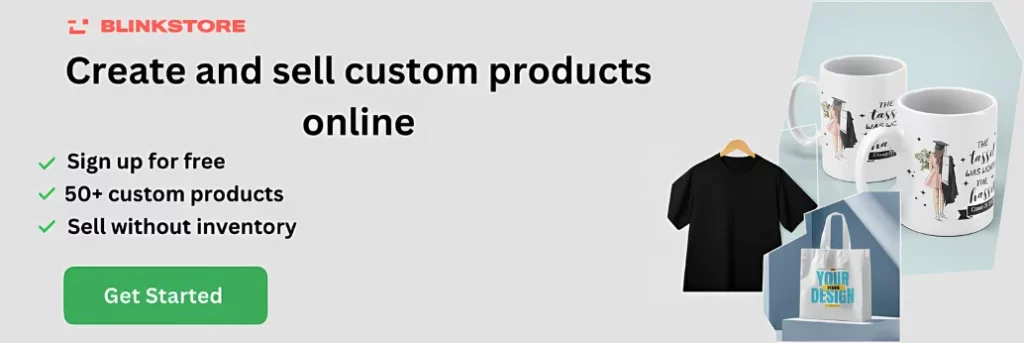
How to Do Branded Dropshipping? (Step-By-Step Guide)
Here are steps to start your branded dropshipping:
Step 1: Define Your Unique Niche
Precision is your compass when choosing a niche. Dive deep into market research to uncover trends and gaps. Opt for specificity—instead of “fitness,” try “sustainable home fitness.” This makes it easier to connect with a more targeted audience.
Statistic: Niches with specific targeting can experience a 20% increase in conversion rates.
Step 2: Start Your Branded Store
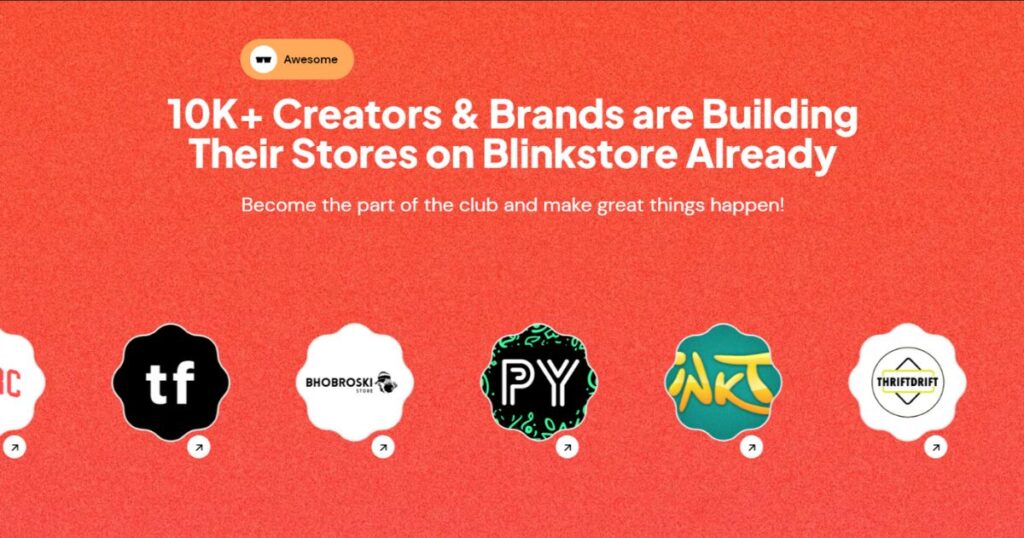
Ensure your online store is not just a place to buy products, but an immersive brand experience. Invest time in selecting a theme that resonates with your brand identity. For instance, if you’re in the eco-friendly niche, consider a nature-inspired theme. The layout, color scheme, and overall aesthetic should mirror the values of your target audience.
Pro Tip: Use platforms like Blinkstore for easy customization and a polished storefront.
Step 3: Choose Your Products
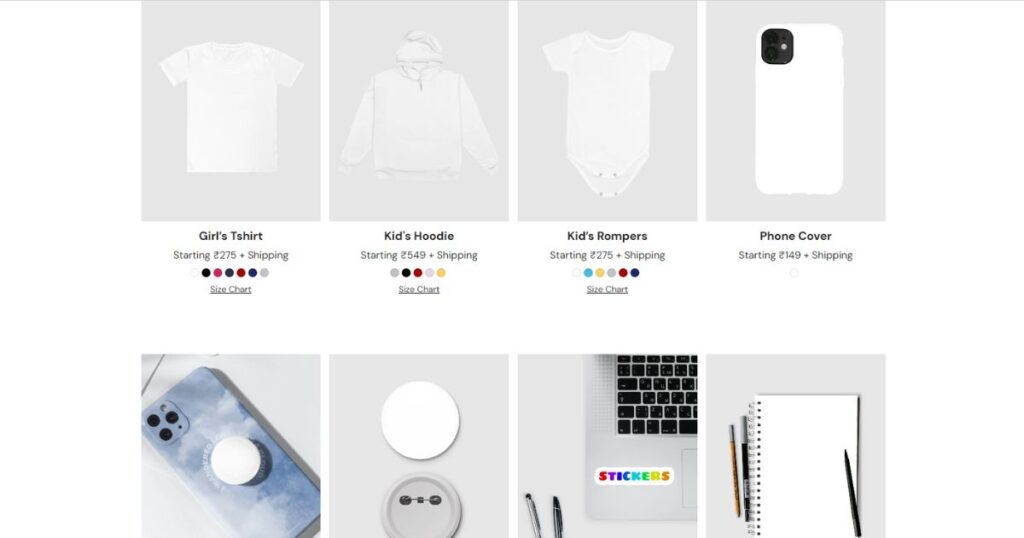
Curate your product selection thoughtfully. Align them with your niche and offer a unique value proposition. High-quality images and detailed product descriptions not only enhance the user experience but also build trust.
Example: If your niche is eco-friendly fitness, showcase products like reusable water bottles and recyclable yoga mats.
Read more: 100+ Best Dropshipping Products in India (2024)
Step 4: Shape Your Compelling Brand Message
Define your brand voice and messaging strategy. Communicate your values and what makes you unique. For instance, if sustainability is a key value, emphasize it in your product descriptions and marketing materials.
Tool: Use content creation tools like Canva for visually appealing and consistent messaging.
Step 5: Select Your Store’s Iconic Logo
Design a memorable logo that encapsulates your brand. If eco-friendliness is your focus, incorporate elements like leaves or a green color palette. A professionally designed logo can significantly enhance brand recognition.
Pro Tip: Platforms like Fiverr offer affordable options for professional logo design.
Step 6: Forge Partnerships with Reliable Suppliers
Your dropshipping success depends on reliable suppliers. Vet them meticulously for product quality and reliability. Diversify with multiple suppliers to expand your product range.
Example: If selling eco-friendly fitness gear, choose suppliers committed to sustainable materials.
Read more: 20 Best Dropshipping Suppliers in India
Step 7: Optimize Your Selling Channels
Select platforms based on your audience and product type. Whether it’s your website, Blinkstore, or social media, tailor your choice to where your audience is most active.
Pro Tip: Leverage marketplace advantages on platforms like Etsy for niche-specific products.
Step 8: Integrate Efficient Automation Tools
Streamline operations with tools like Oberlo or Dropified. Automate product imports, order fulfillment, and inventory management for efficiency and error reduction.
Statistic: Businesses using automation tools report a 15% reduction in order processing times.
Step 9: Simplify Product Importation
Efficiently import products into your store. Pay attention to product details for consistency and accuracy. This ensures a seamless customer experience.
Example: Use CSV files for bulk importing, reducing manual data entry.
Step 10: Infuse Your Store with Customized Branding
Personalize your store to make it memorable. Use custom fonts and colors that reinforce your brand identity. An aesthetically pleasing and user-friendly store fosters trust and engagement.
Pro Tip: Utilize user-generated content to showcase real people interacting with your products.
Step 11: Strategize Your Product Marketing
Implement a robust marketing strategy. Utilize social media, influencers, and SEO to drive targeted traffic. Consistency in marketing efforts is key for long-term success.
Tool: Utilize scheduling tools like Buffer to maintain a consistent social media presence.
Read more: 10 Meta Influencers – What Are They And Are AI Influencers On Instagram The Future?
Step 12: Efficiently Process Customer Orders
Establish a smooth order processing system. Transparent communication about shipping times and tracking information contributes to positive post-purchase experiences.
Example: Offer order tracking directly through your website for customer convenience.
Step 13: Deliver Personalized Customer Service
Prioritize exceptional customer service. Respond promptly and professionally. Consider implementing personalized touches like thank-you notes for an extra touch.
Statistic: 70% of consumers are willing to spend more with companies that provide excellent customer service.
Step 14: Constantly Monitor and Gauge Your Success
Utilize analytics tools to track KPIs. Regularly analyze sales data, customer feedback, and website traffic to make informed decisions for continuous optimization.
Pro Tip: Set up Google Analytics for in-depth insights into your website’s performance.
Tips for a Successful Branded Dropshipping

1. Unique Branding: Develop a unique and memorable brand identity. This includes a distinctive logo, color scheme, and brand messaging that sets you apart from competitors.
2. Quality Product Selection: Choose products that align with your brand and target audience. Focus on quality to ensure customer satisfaction and minimize potential issues with returns or complaints.
3. Professional Website Design: Invest in a professional and user-friendly website design. Ensure that your online store is easy to navigate, visually appealing, and provides a seamless shopping experience.
4. Clear Product Descriptions: Write clear and compelling product descriptions. Highlight key features and benefits to help customers make informed purchasing decisions.
5. Customer Trust and Transparency: Build trust with your customers by being transparent about your business practices. Clearly communicate shipping times, return policies, and any other relevant information.
6. Responsive Customer Support: Offer responsive customer support to address inquiries and issues promptly. A positive customer service experience can lead to repeat business and positive reviews.
7. Branded Packaging: Consider incorporating branded packaging materials to enhance the unboxing experience for customers. This adds a personal touch and reinforces your brand.
8. Social Proof: Showcase customer reviews, testimonials, and user-generated content on your website. Positive feedback from satisfied customers can build credibility and trust.
9. Consistent Branding Across Channels: Maintain a consistent brand image across all online channels, including your website, social media profiles, and marketing materials.
10. Marketing Strategies: Implement a robust marketing strategy that includes a mix of digital marketing, social media marketing, content marketing, and influencer collaborations to increase brand visibility.
11. Regularly Update Product Offerings: Stay current with market trends and regularly update your product offerings. This keeps your store fresh and encourages repeat visits from customers.
12. Monitor Competitor Strategies: Keep an eye on your competitors to stay informed about industry trends, pricing strategies, and new product launches. This information can help you adapt your approach and stay competitive.
13. Optimize for Mobile: Ensure that your online store is optimized for mobile devices. Many users shop and browse on smartphones, so a mobile-friendly website is crucial for a positive user experience.
14. Legal Compliance: Familiarize yourself with and adhere to legal requirements for e-commerce in your target market. This includes compliance with consumer protection laws, privacy regulations, and any other applicable regulations.
15. Continuous Improvement: Regularly analyze your business performance, gather customer feedback, and seek opportunities for improvement. Adapt your strategies based on what works best for your brand and your customers.

Conclusion
Congrats! You now have what it takes to become a branded dropshipper. With your distinct brand identity, high-quality products, and strategic approach, you are prepared to redefine e-commerce success. However, note that it’s not a walk in the park to build a successful branded dropshipping. Be patient and work hard it will take time to see results.
Consider Blinkstore to create your branded store because you will be surprised by the features it will offer for your business, especially in your starting phase. Ready to start your branded dropshipping with Blinkstore?
FAQs
Here are some frequently asked questions about Branded Dropshipping.
Can I dropship branded products from AliExpress?
Yes, you can dropship branded products from AliExpress. However, it’s important to be cautious about potential trademark issues. Check the legality of selling specific branded items and be transparent with your customers about the origin of the products.
Can you dropship branded products?
Yes, you can dropship branded products. Ensure legal compliance, work with reputable suppliers, and prioritize customer communication about the origin of the products.
How to dropship luxury brands?
Dropshipping luxury brands requires careful consideration. Partner with authorized suppliers and ensure the products are genuine. Focus on creating a premium shopping experience, highlighting exclusivity, and providing detailed product information.
How to deal with the lack of branding in dropshipping?
To address the lack of branding:
Create a compelling brand story.
Utilize custom packaging and inserts.
Consider private labeling for a unique touch.
Enhance customer experience through exceptional service.
Invest in marketing to build brand recognition over time.
How successful are DropShippers?
Success in dropshipping varies widely and depends on several factors. The level of success is influenced by niche selection, marketing strategies, product quality, customer service, and overall business skills. While some dropshippers achieve significant success, others may face challenges or experience more modest results.
Can I dropship branded products dropshipping?
Yes, branded dropshipping is a viable business model. Develop a unique brand identity, select a niche, curate products, and focus on marketing to differentiate yourself in the market.
How much do DropShippers earn?
The earnings of dropshippers are variable and depend on factors such as product pricing, profit margins, sales volume, and operating expenses. Dropshippers typically earn a percentage of the product sale after covering the cost of goods, marketing expenses, and other business-related costs.
Related Resources
- How To Start Dropshipping Business in India in 3 Easy Steps
- What is Dropshipping? How does it work? Pros and Cons
- 18 Reliable Clothing Dropshipping Suppliers India in 2024
- Print on Demand Without Shopify: Exploring Alternatives in 2024
- Types of eCommerce Websites You Should Know in 2024
- 15+ Best Dropshipping Websites in India to Consider in 2024
- B2B Dropshipping: How to Dominate Your Competition in 2024
- Is Dropshipping Legal in India?
